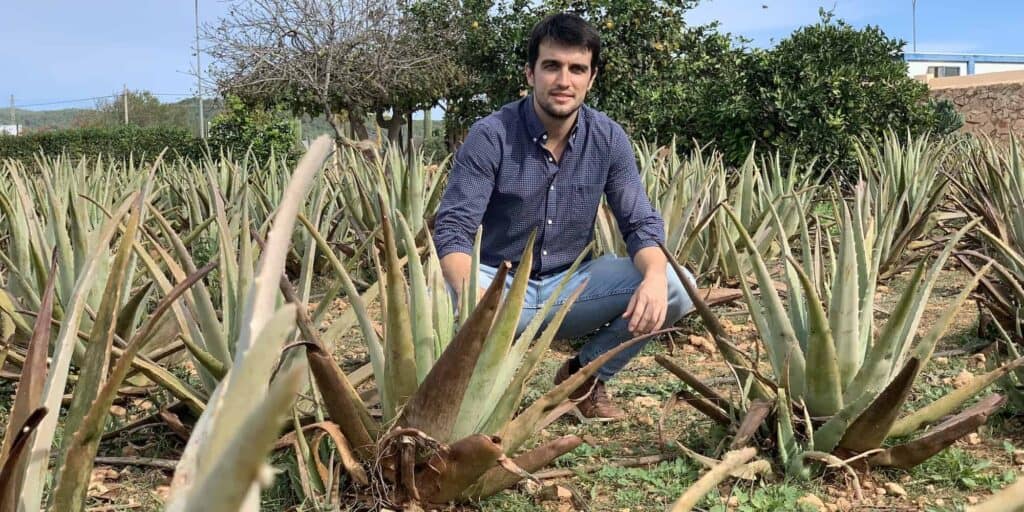MEMO ON ALOE VERA
✓ It is a succulent plant that originally grows in arid environments very poor in water.
✓ It has existed for millennia in the Middle East, where traces are found in Mesopotamia as early as the 2nd millennium BC. It was also a powerful remedy for treating wounds in ancient Egypt.
✓ Its green, spiny, thick and fleshy leaves contain a precious gel.
✓ It is applied externally to burns, stings and other skin conditions. Its soothing, moisturizing and healing properties are well documented and also make it a cosmetic ally for skin beautification.
✓ When taken internally, it is an impressive source of nutrients and active compounds. Its low-calorie gel improves digestion, relieves constipation and detoxifies the body, among other things.
Ibiza, a historic land of aloe vera
At the entrance to César’s aloe vera plantation, a faded yellow submarine reminds us that the sea is not far away. We are in Sant Antoni de Portmany, on the west side of the island. In this unusual year, Ibiza did not buzz with parties into the early hours.
And despite the economic problems caused by the drop in tourism and the closure of clubs, the Ibizans seem to have regained a tranquility that had long been disrupted.
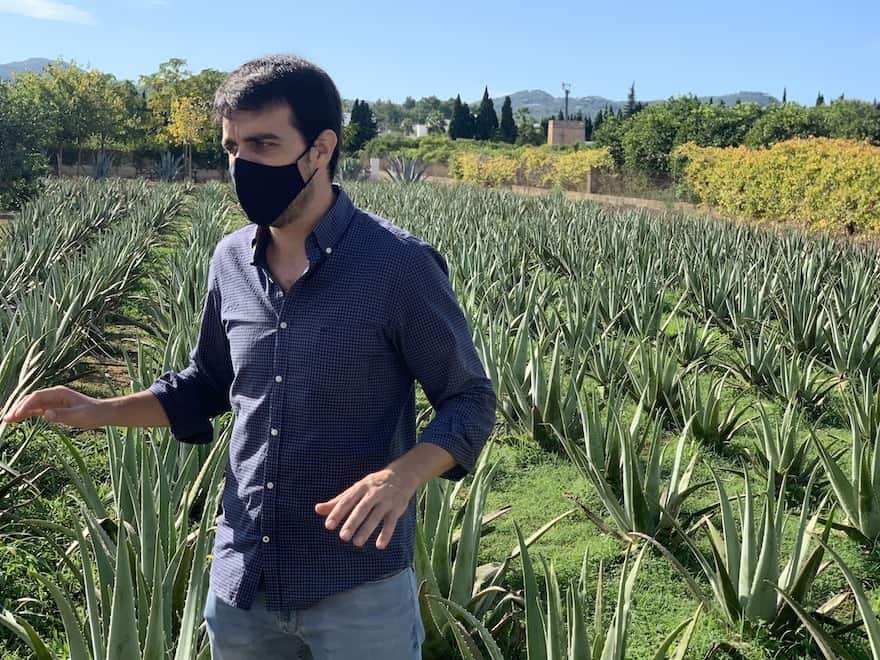
It is in this context that we meet César, 33, a native-born Ibizan. While studying international business in Madrid, he laments the quality of aloe-based products he finds in the capital.
He recalls the aloe-rich nature of his native lands and their therapeutic and cosmetic properties. That gave rise to the idea of creating a transparent, plant-based aloe vera gel brand made from selected Ibizan plants.
“In Ibiza, you learn about aloe vera from a very young age: if you get hurt or get sunburned, your parents and grandparents treat you with this plant”
In 2014, he launched Ibizaloe, a brand with local producers. Then in 2015, he acquired his own plantations and opened an Ibizaloe shop at Ibiza airport. Today, in addition to supplying the whole island with aloe vera juice and other cosmetics, many of his customers come from Germany, the Netherlands, and Poland.
According to César, three factors explain the quality and uniqueness of his aloes: Ibiza’s microclimate, its red clay soil rich in nutrients, and the quantity and purity of its spring waters.
Aloe vera, from plant to gel
His organic aloe vera plants grow on 4 plantations covering 5 hectares. Depending on the year, he can harvest between 30,000 and 100,000 kg of aloe. He lost many customers because of the pandemic, but the island’s residents have not lost interest in the plant and its benefits.
Here we are in his so-called ‘tourist’ plantation, the one that welcomes curious visitors throughout the year. It also has a museum dedicated to the plant’s history and the study of its benefits.
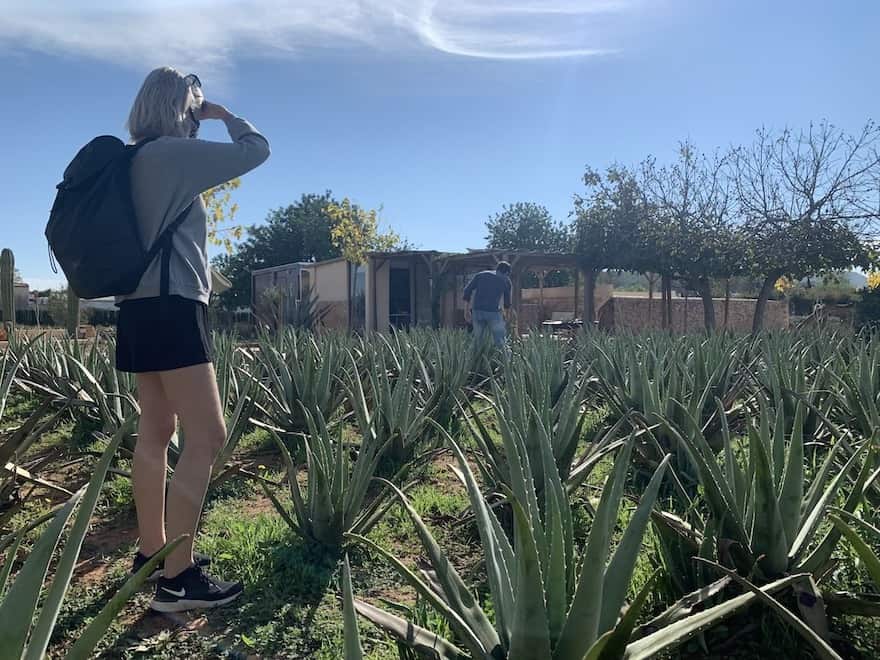
César cultivates Barbadensis Miller, an edible aloe species with well-documented and recognized health benefits. Initially, secondary leaves, ‘the pups’, are taken from a mature aloe vera, ‘the madre’. These are then replanted, watered only once, and left for a month before being watered again.
This watering regimen is repeated several times: in this way, the roots will develop and reach for water underground. That’s why they are more resilient and can better withstand diseases, frost, etc.
César’s aloe vera plants bloom four times a year, which is much more than average! This shows how healthy his plants are.

Additionally, he uses a unique technique to ensure the resilience and high quality of his aloe plants. After several months, the plants are removed whole and laid out to dry in the sun. They dehydrate and purge parasites and fungi, for example. It’s an ecological and effective way to ‘clean’ them.
Then they’re replanted. The aloe regenerates on its own! And the specimens that survived the process (he reports only 2% losses) are particularly healthy and resilient.
He cuts a leaf for us: you can clearly see the three parts of the plant’s interior.
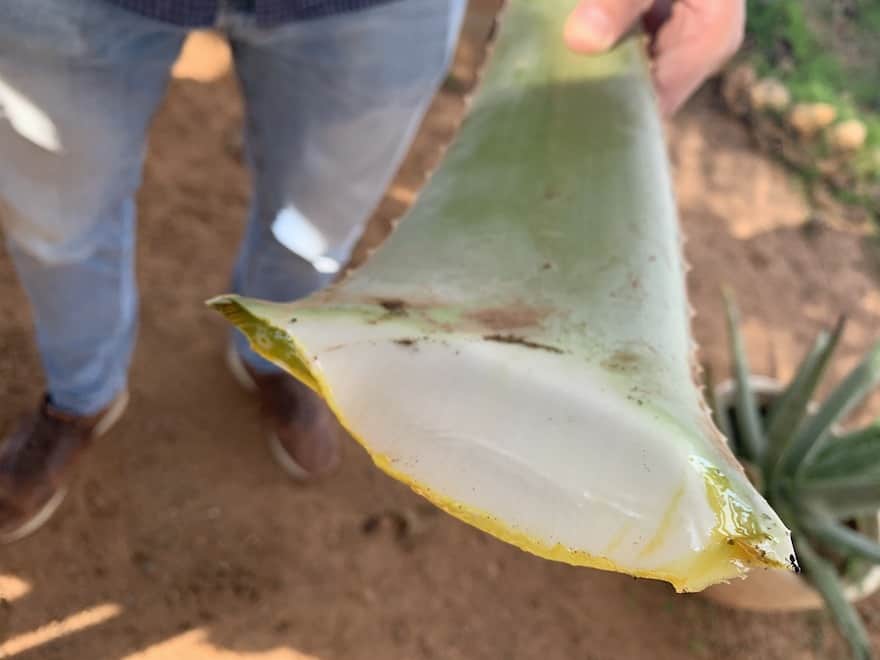
- Le cortex
- L’aloïne, une substance jaune, toxique, irritante et très laxative
- Le gel transparent
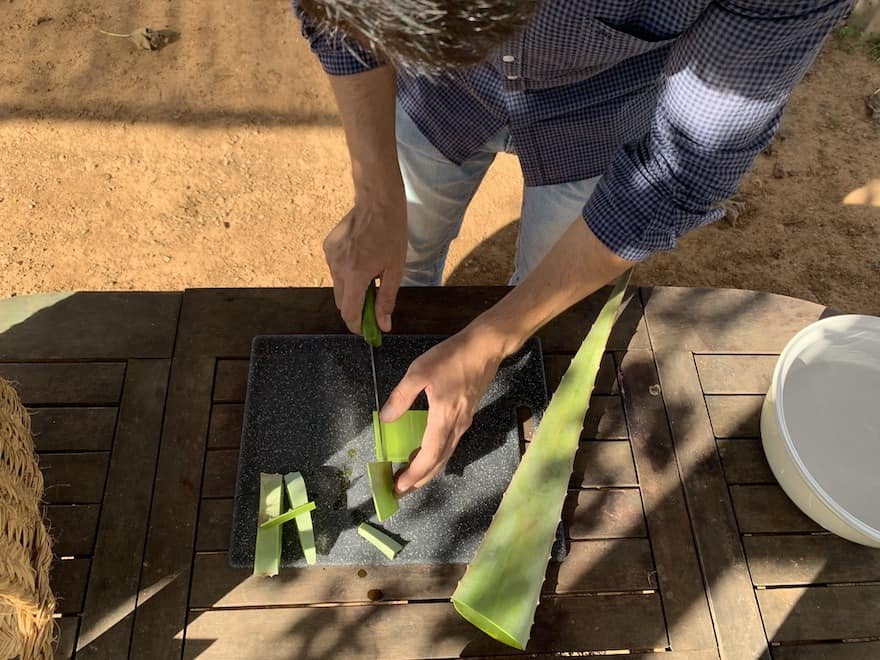
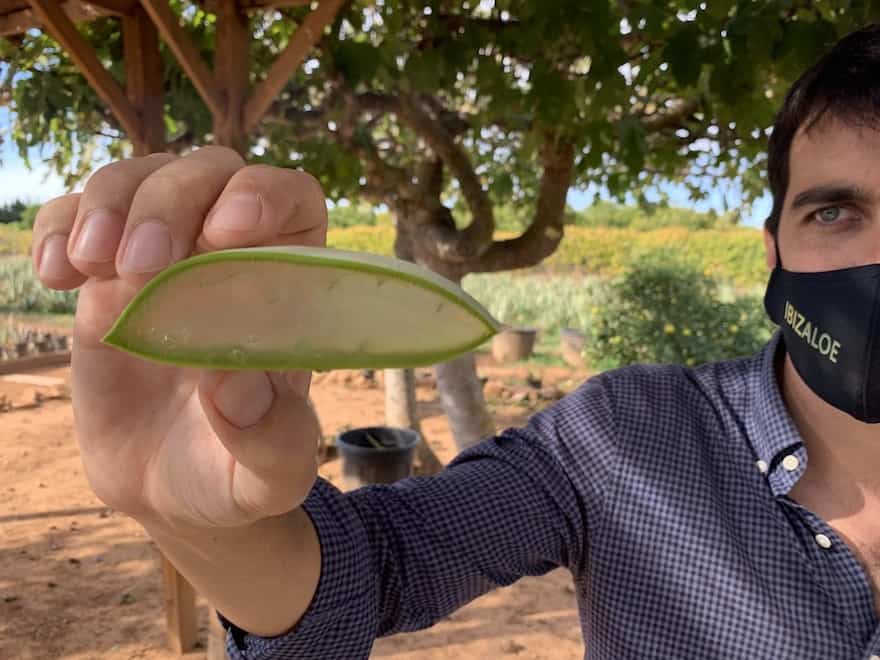
To ensure the gel retains as many properties as possible, the aloes are watered minimally. Once a week (and less than that in winter). When there is more water, the yield is certainly higher, but the qualities of the gel decrease.
Its quality, precisely, can be evaluated thanks to what is called aloeverose (polysaccharides). For one liter of gel, César measures 1700 mg, far more than the average of about 750 mg.

Ibizaloe produces the gel artisanally and cold-processed to preserve all its properties. Being both producer and processor allows them to guarantee the same quality from the plant to the finished product. César has thus developed a wide range: 99.98% aloe vera juice, 99% aloe vera gel, soaps, moisturizing creams, mineral-filter sunscreens…
And to top it all off, the products are preserved using the citrus fruits that grow on the plantation: lemons, oranges.



